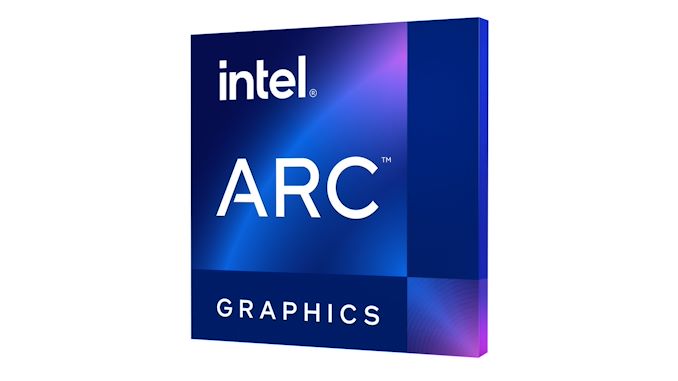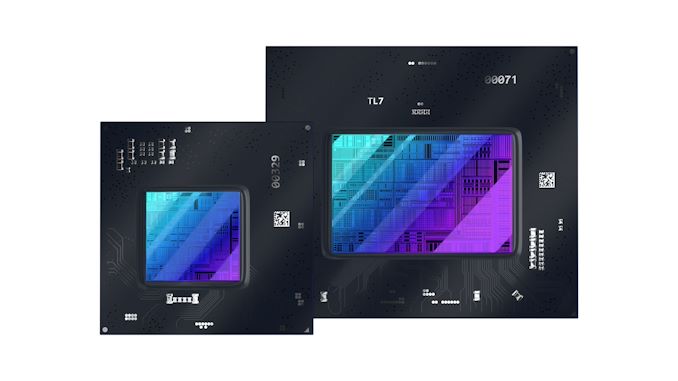Intel: Desktop Arc A-Series Launch Now Staggers in to Q3'22
by Ryan Smith on May 10, 2022 9:45 AM EST
Ahead of Intel’s Vision event this morning, the company has published a short update on the status of the ongoing launch of their Arc family of GPUs. Penned by VP and GM of Intel’s Visual Compute Group, Lisa Pearce, the blog post addresses a few questions around the Arc launch, and particularly when we should expect to see the launch of Intel’s first desktop cards.
Starting there first, Pearce has announced that the desktop Arc launch has for all practical purposes slipped, with Intel now outlining a more staggered approach to their desktop launch. The first Arc desktop products were previously slated to launch later in Q2, and while this technically remains true, Intel’s Q2 launch plans are now limited to the Chinese market. The worldwide launch of the first desktop Arc products will then follow that in Q3 of this year.
Furthermore, that initial launch is going to be limited to the low end (3-series) parts of the Arc product stack, all of which are based around the ACM-G11 GPU. This is the same GPU that’s being used in Intel’s first wave of mobile Arc products as well, so like in mobile, Intel is starting small and working their way up on the desktop. The desktop launch of the rest of Intel’s stack, the mid-range Arc 5 and high-end Arc Arc 7 products, will then follow in late summer. This will be a worldwide launch, however Pearce is very careful to note that it’s initially for “OEMs and system integrators”, with a retail release to follow later.
Given Intel’s slow, regional-focused rollout of their first Arc mobile products, these developments are not entirely unexpected. As Pearce accurately notes in her blog post, Intel tends to launch low-end (and low-volume) parts in China first, which is something we saw last year with the release of Intel’s Iris Xe (DG1) products. Compared in particular to the North American and European markets, the Chinese market is far more weighted towards entry-level parts, and logistically it makes for an easier launch since this is where many boards and board components are made to begin with.
| Intel Arc Launch Decoder | ||||||
| Arc 3 Mobile | Arc 5 & 7 Mobile | Arc 3 Desktop | Arc 5 & 7 Desktop | |||
| China: OEM | Launched | Early Summer | Q2 | Later This Summer | ||
| China; Retail | - | - | After OEMs | After OEMs | ||
| Rest of World: OEM | Shipping Now | Early Summer | Q3 | Later This Summer | ||
| Rest of World: Retail | - | - | After OEMs | After OEMs | ||
Meanwhile, Pearce’s blog post also offers an update on the ongoing rollout of Intel’s Arc mobile products. Acknowledging that Arc 3 laptop shipments are behind schedule, according to Pearce Intel has been hamstrung by a combination of unspecified software issues and China’s significant COVID lockdowns. As a result, Arc 3 laptops are only now finally becoming available on a worldwide level.
With the kinks apparently worked out, Intel is now preparing for the launch of the first mobile Arc 5 and Arc 7 products. Like Arc 3, the mobile parts will debut first. According to Pearce, the first Arc 5 and Arc 7 laptops will be available early this summer, hinting at a post-Computex (and likely Q3) release.
Overall, Intel has been planning a relatively modest launch from the start, with just a bit over 4 million GPUs slated for 2022. So the silver lining to their multiple schedule delays, at least, is that the company is getting some of the kinks worked out of the process while they’re still dealing with what’s ultimately small potatoes. With future generations the stakes will go up – and so will the expectations.
Source: Intel











32 Comments
View All Comments
shabby - Tuesday, May 10, 2022 - link
China/oem: nowRetail: never
Abort-Retry-Fail - Tuesday, May 10, 2022 - link
Not sure about that ... too much riding on all this. There will be "bloodshed" on entry-level discreet GPUs between AMD, Intel and nVidia.
I'm looking forward to a 'new and improved' AMD "Radeon RX 6550 XT" going toe-to-toe with the Chipzillah Arc A350/310 at TSMC 6nm ___ and nVidia's "play"
I also look forward to seeing new Radeon 'Video Core Next' logic against the Arc/NVENC logic.
Grab your popcorn ...
powerarmour - Tuesday, May 10, 2022 - link
Agreed, it's DOA.If it looks like a duck, swims like a duck, and quacks like a duck, then it probably is a duck.
Great_Scott - Wednesday, May 25, 2022 - link
From the release schedule, it looks like Intel is aware that first-gen ARC is a dud.That's a shame, although if it's because of software/driver reasons it might get better later on.
Unfortunately for competition, Intel is way too late; the upcoming Zen 4 processors are all APUs so it looks like the window for low-end graphics cards is coming to a close.
ZipSpeed - Tuesday, May 10, 2022 - link
Yawn. If there was even a glimmer of excitement for these GPUs, it's been long gone. With Ada and RDNA3 launching not too long after, I imagine most people will be looking in that direction anyway. The question is if Intel will continue to iterate even if they're not competitive, or if they'll give up like prior failed markets.brucethemoose - Tuesday, May 10, 2022 - link
To paraphrase Anand, there are no bad products, just bad prices.And there is certainly room for a better priced competitor this year, even if its a bit last gen.
powerarmour - Tuesday, May 10, 2022 - link
We've definitely had bad products, even when they're cheap.TheinsanegamerN - Tuesday, May 10, 2022 - link
Oh there are just bad products. The RX 6500xt is a good example of a GPU that suffers from hardware limitations. The GTX 970 gimped by its own memory bus is another example. The FX 5800/5900/5950 GPUs with their poor image rendering, ece.Abort-Retry-Fail - Tuesday, May 10, 2022 - link
LOL . . . *** F A I L ***
The AMD 'Rope-A-Dope' strikes, again.
_______________________
1) Navi 24 = A die size of 107 mm² at TSMC 6nm;
2) ( the 'successor' of the Arctic Islands AMD Lexa GCN 4.0 variant from 2016-2020 );
3) the Navi 24 will become 'Dr Su's Graphic Work Horse';
4) anticipated yield = 250+ 'dies per wafer' (?);
5) the Navi 24 variants begat Mobility Radeon and entry 'Pro' products; and,
6) the Zen 3+ Rembrandt (6000 series) RDNA 2 APUs . . .
_ _ _ _ _ are likely precursors to the AMD Ryzen 7000 ‘Phoenix’ APUs With RDNA 3
_ _ _ _ _ with Navi 24 based 'graphic engines' DDR5 and that fancy last-level cache.
Rope-A-Bunch-Of-Dopes, indeed.
meacupla - Tuesday, May 10, 2022 - link
I disagree, there are bad products. They often like to catch fire and/or explode.IDK about you, but I don't like it when my house burns down from a bad product.